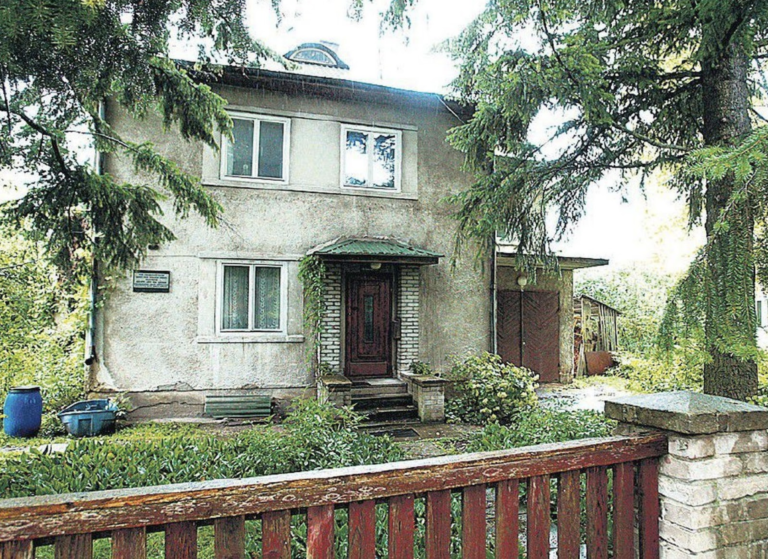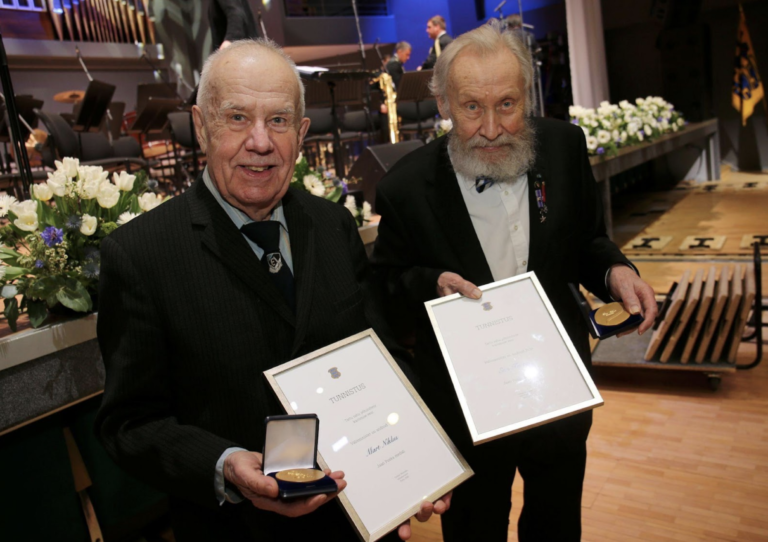
25 Vikerkaare Street (Photo: Margus Ansu)

Mart Niklus and Enn Tarto (Photo: Sille Annuk)
Vikerkaare 25
- Home of dissident Mart Niklus, where in 1979 the Baltic Appeal was born
25 Vikerkaare Street and the Baltic Appeal
The Baltic Appeal was born in 1979 at 25 Vikerkaare Street, as a letter of formal notice which was drawn up by dissidents and freedom fighters to be issued to the Soviet authorities in the Baltic states. The Baltic Appeal, which was addressed to the UN secretary-general and the governments of the Soviet Union, West Germany and East Germany and of the countries which had signed the Atlantic Charter, openly demanded the publication of the ‘Secret Supplementary Protocols’ of the Molotov-Ribbentrop Pact (sometimes abbreviated to ‘MRP’, under the terms of which the Soviet Union had occupied the Baltic states). It also declared the MRP protocols to be null and void, and demanded the restoration of the independence of the Baltic states. This formal notice was special due to the fact that the signatories used their own names instead of remaining anonymous, and representatives of all three Baltic nations were present at the signing, which proved the international connections of the dissidents and increased the credibility of the notice.
As the Baltic Appeal was successfully smuggled out of the Soviet Union, it had a remarkable international impact. The outside world’s media discussed it, and ideas in connection with the topics of the occupation and independence of the Baltic states reached the political conscience of the western world in a far stronger form than ever before. The European parliament supported the demands of the Baltic Appeal in 1983, and Ronald Reagan, president of the United States, proclaimed ‘Baltic Freedom Day’ on the basis of those ideas which were expressed in the document.
The Baltic Appeal was drawn up at 25 Vikerkaare Street in Tähtvere simply because this is where one of the authors, Mart Niklus (born in 1934), happened to live. Risking their own welfare, a total of forty-five people signed the Baltic Appeal, including four Estonians (Niklus, plus Enn Tarto, Erik Udam, and Endel Ratas), six Latvians, and thirty-five Lithuanians. The letter of formal notice was also supported by Russian dissidents, including the well-known scientist, Andrei Sakharov.
The release of the Baltic Appeal was timed to align with the fortieth anniversary of the MRP. It was published on 23 August 1979. Later, the MRP’s anniversary became a symbolic date as the famous Baltic Way – a human chain demonstration against Soviet occupation which ran through the three Baltic states – was also formed on 23 August 1989. When Estonia regained its independence from the Soviet Union in 1991, the Baltic Appeal was retrospectively seen as one of the first sparks in a fire which led to such breakthrough events.
Listen to the ‘Hommikukaja’ (‘The Morning Reflection’) radio broadcast from 13 July 1988 in the archives of Estonian Public Broadcasting (ERR). It covers the welcoming of Mart Niklus by the people at Tartu’s railway station.